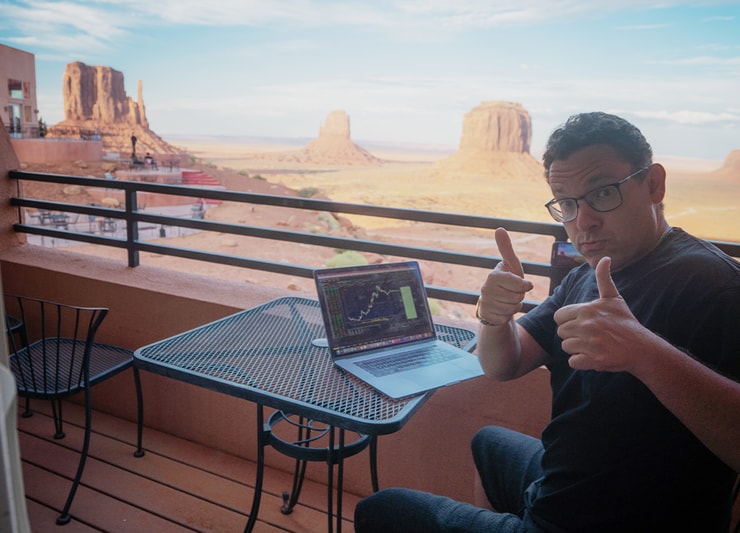Every single day there’s a new stock spiking to INSANE heights.
Let’s go through this week so far:
Monday: Beamr Imaging Ltd. (NASDAQ: BMR) spiked 1,500%.
Tuesday: Digital Brands Group Inc. (NASDAQ: DBGI) spiked 340%.
Wednesday: Datasea Inc. (NASDAQ: DTSS) spiked 1,200%.
Thursday: China Natural Resources Inc. (NASDAQ: CHNR) spiked 750%.
WOOOOOHOOOOOOOO! $CHNR binggooooooo, halted just above the key level and a breakout now a $6ish, this is $DTSS all over again, happy to have entry in the $4s, you gotta love it! TELL ME YOU ARE PREPARED TO CAPITALIZE!!!! DON'T BE A TOXIC SHORT SELLER WHO CELEBRATES JUST NOT…
— Timothy Sykes (@timothysykes) February 15, 2024
Welcome to Friday, arguably the hottest trading day of the week.
It’s very likely we will see another insane runner.
Nothing’s a 100% guarantee in the market. But luckily we don’t have to predict these runners. They fall right into our laps.
Here’s how it works: We wait for the stock to spike during premarket, and if it matches our framework, we start to plan a trade.
Essentially, this is a two part process:
- Find the runner.
- Trade the runner.
It’s easier said than done, but that’s why I’m here.
There’s a specific process my millionaire students and I use to pull profits from the market. Follow the rules and your account will stay safe.
Get ready for Friday’s price action!
Two Part Process

Yesterday’s runner was alerted in premarket hours at 8:29 A.M. Eastern.
This trading tool is ESSENTIAL for side-hustle traders who want to catch the markets hottest stocks in time.
254% GAIN off of $CHNR!🔥
Retweet & favorite if you caught a piece of this move!
Get the Next Alert 🚨 👇 https://t.co/YaHBqQyPgn #DayTrading #StocksToWatch pic.twitter.com/4q0zDKCeQ9
— StocksToTrade (@StocksToTrade) February 15, 2024
These spikes don’t last forever. You need to pay attention while they’re hot.
There’s a reason the share prices are so cheap: They’re penny stocks. And they’re crap companies.
But … If we’re wise to the scheme, we can ride the short term price action for huge profits.
Take a look at the profit I pulled on CHNR yesterday (starting stake of $4,320) …

And I wasn’t the only one to profit.
Here’s a screenshot of our chatroom:

There are SO MANY opportunities to profit in this 2024 market.
Especially when these stocks spike with the same catalyst over and over again.
CHNR spiked for the same reason as DTSS from a day earlier. It’s the strongest catalyst in the market right now.
The short squeeze.
These crappy companies start to show bullish momentum during premarket hours.
Degenerate short sellers see the momentum and think:
“This is a crappy stock. It doesn’t deserve to spike.”
And they sell short, trying to capitalize when the stock eventually crashes.
Theoretically, it’s a solid strategy. But when there are too many short sellers in a single stock, a little too much bullish momentum will cause them to panic. They have to buy shares back to exit the position. That ADDS to the bullish momentum. And that’s how we get massive short squeezes.
1. Find The Runner

Short squeeze runners can be difficult to spot for a new trader.
That’s why the Breaking News alerts are so helpful in the beginning. It’s run by ex-Wall Street guys who know how to identify things like an insane short squeeze.
Usually we trade spikers with bullish news. But there isn’t always a news catalyst that sparks a short squeeze. Sometimes it’s seemingly at random.
That’s why: I don’t predict the short squeeze. That’s impossible.
Instead, I react to what I see in the market.
- A low priced stock. Below or around $5 at the beginning of the move.
- The low price is part of the formula: Short sellers can tell the stock is crappy, it adds to their delusional strategy. The low price also helps the price spike higher from a percent perspective, that helps long-biased traders profit.
- Spiking way more than it should.
- We usually look for stocks spiking +20% in premarket. But a short squeeze is more obvious, CHNR spiked 750% yesterday in premarket.
- With a low float.
- A low float is anything below 10 million shares. The low supply of shares constricts supply for short sellers and long traders alike. It helps the price spike higher. CHNR had a float of 2.5 million shares.
More Breaking News
- Bright Minds Biosciences’ Shares Skyrocket: Untangling the Puzzle Behind the Dramatic Surge
- Is ON Semiconductor the Ideal Stock to Watch Post 3% Rise?
- Surging Heights: Is La Rosa Holdings’ Optimistic Outlook Sustainable?
And then …
2. Trade The Runner

The high of day is the most important level for a short squeeze.
If the stock can break the premarket highs, that’s when short sellers start to max panic. And the stock starts to squeeze.
Here’s how I played CHNR:

I saw the bullish momentum as prices started to rip toward $6 resistance.
I bought shares before the breakout and sold into the bullish momentum afterward.
Hindsight is 20/20.
It looks easy on the chart above, but understand that every chart is a little different.
It’s not like they all spike to $6 in premarket and then break out and shoot to $8 before noon. It takes some experience before traders can capitalize on these plays alone.
My students are finding success right now because they’re using the trading tools I developed to accelerate their learning curve.
XGPT is one of the best examples: The AI boom in 2023 led to a tech revolution.
And since I’m always trying to make your learning experience better, I leveraged AI to help traders learn THIS PROCESS.
Now my students can trade as if I’m watching over their shoulder!
- XGPT announces the best afternoon trade setups using my two-decade tested process.
– AND –
- Traders can ask XGPT about a ticker they’re watching and it will respond as if I gave you the advice myself.
Those who don’t know how to trade stocks like CHNR: Once you find the next spiker, just enter the ticker into XGPT.
The 2024 Market
The reason why SO MANY traders are profiting right now is because the market is hot.
DAILY REMINDER THAT THIS IS A HOT MARKET SO PLAYS LIKE $HOLO $HKIT $GRRR $SYRA $INBS $SUNW $NSTG $ILAG $TOP MAKE YOU FEEL LIKE A GENIUS IF YOU'RE BANKING LIKE ALL MY TOP https://t.co/occ8wKmT5U STUDENTS AND I ARE…NEVER FORGET THAT YOU'RE NOT A GENIUS, IT'S JUST A HOT MARKET &…
— Timothy Sykes (@timothysykes) February 9, 2024
Three out of four stocks follow the market.
That’s why you need to trade right now!
The profit opportunities for small-account traders are unmatched. But we don’t know when the momentum will shift.
The market ebbs and flows. Take advantage of this intense bullish price action while it lasts.
Make hay while the sun shines.
Cheers.


Leave a reply